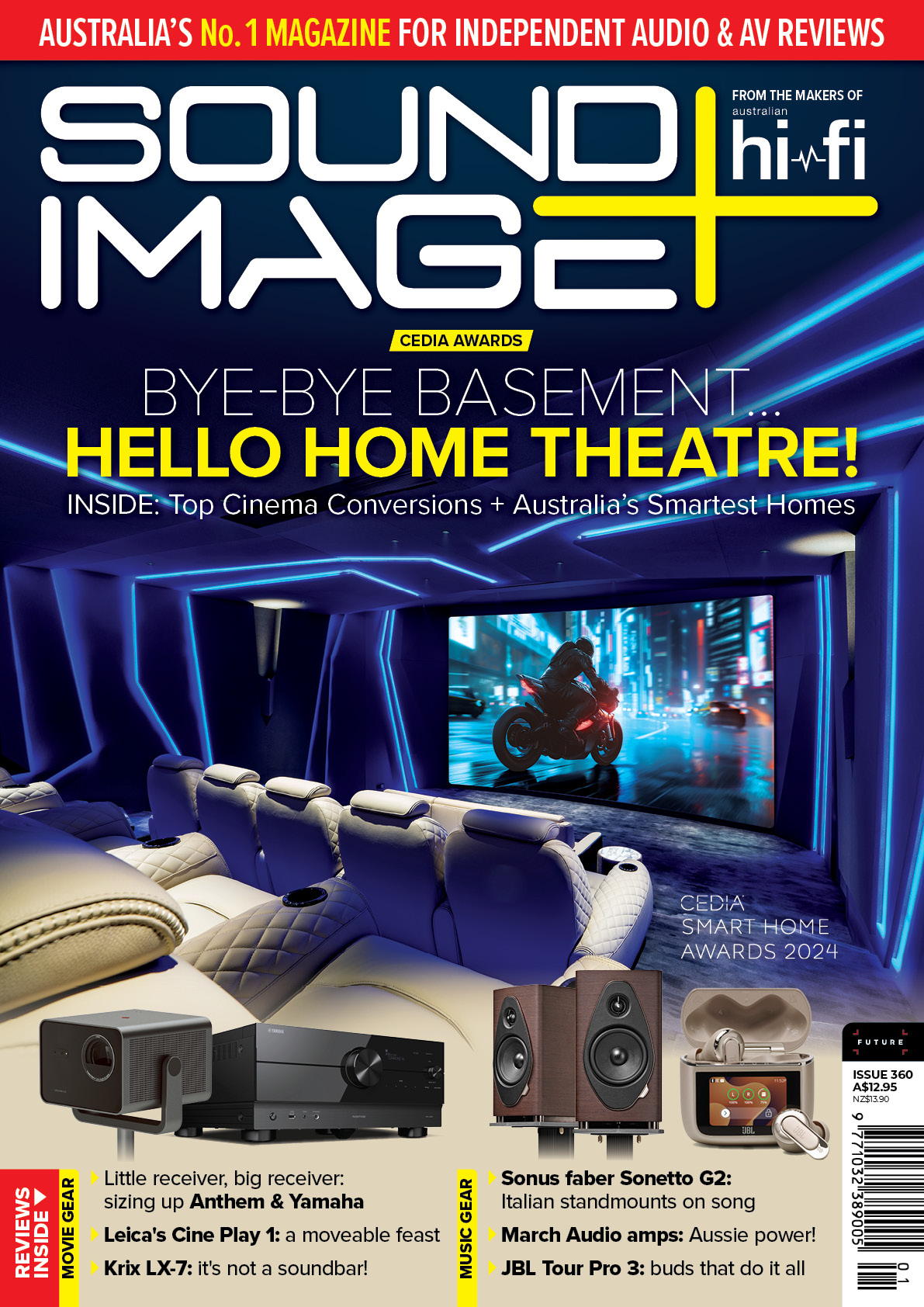Aussie home theatre rooms: Wish fulfilment
It’s third time very lucky for the owners of this home cinema in Victoria, created by Andersons AVI using the power of teamwork.
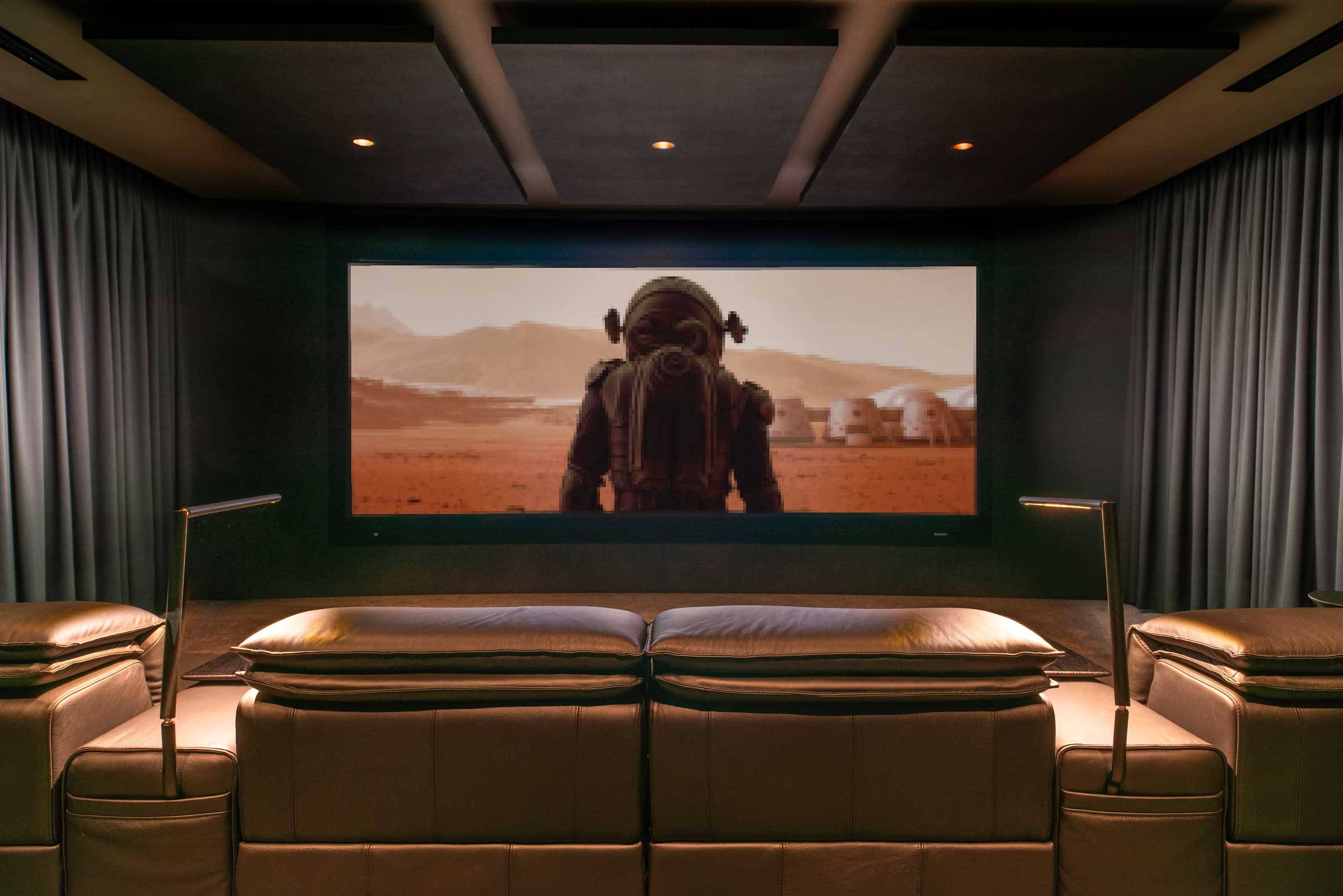
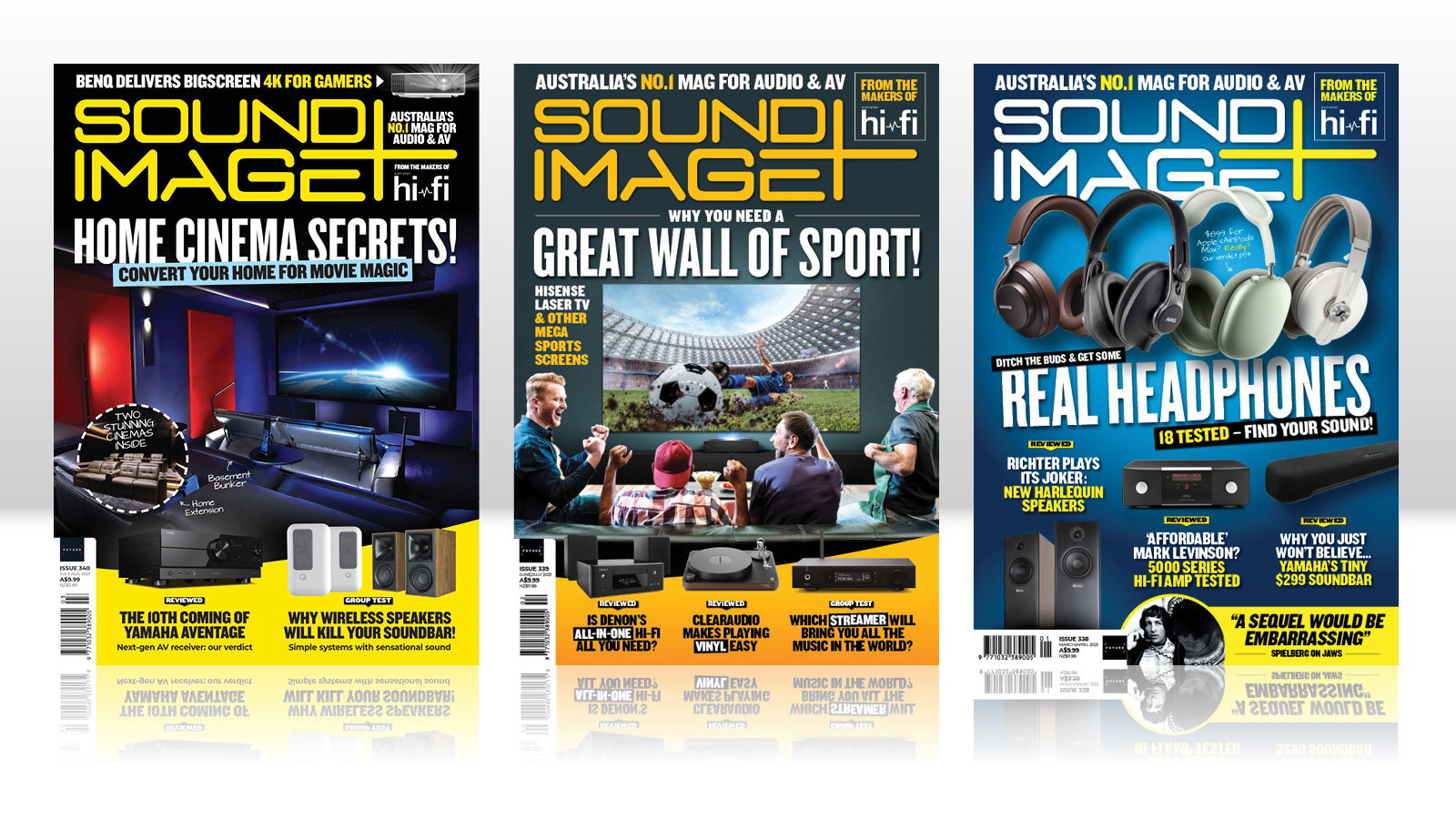
This feature originally appeared in Sound+Image magazine, one of What Hi-Fi?’s Australian sister publications. Click here for more information on Sound+Image, including digital editions and details on how you can subscribe.
This home cinema room was designed as an integral part of a newly-constructed home on the Mornington Peninsula in Victoria. The owners were no strangers to the wonders of home entertainment, having enjoyed a number of high-end audio and video systems during the last 30 years, telling us that they “know what looks good and sounds great!”
Indeed this is their third dedicated cinema room, and the second which has been developed in conjunction with a team led by Alan Anderson of Andersons AVI, supported by Steve Spurrier of Studio Connections, distributor of Genelec speakers, and Paul Kutcher of Visual Fidelity, distributor of Stewart Filmscreen.
“I’ve known this family for many years, ever since they had a home cinema installed at a different property,” Alan Anderson tells us. “I’ve stayed in touch regularly, helping with all manner of tech services from security and surveillance to control systems and their AV distribution and networking. And I made them a promise that in their next home I would deliver a cinema that would not only rival the systems they’d had before, but would deliver a result beyond their expectations.”
So for this latest project, the pressure was on to achieve an exceptional result.
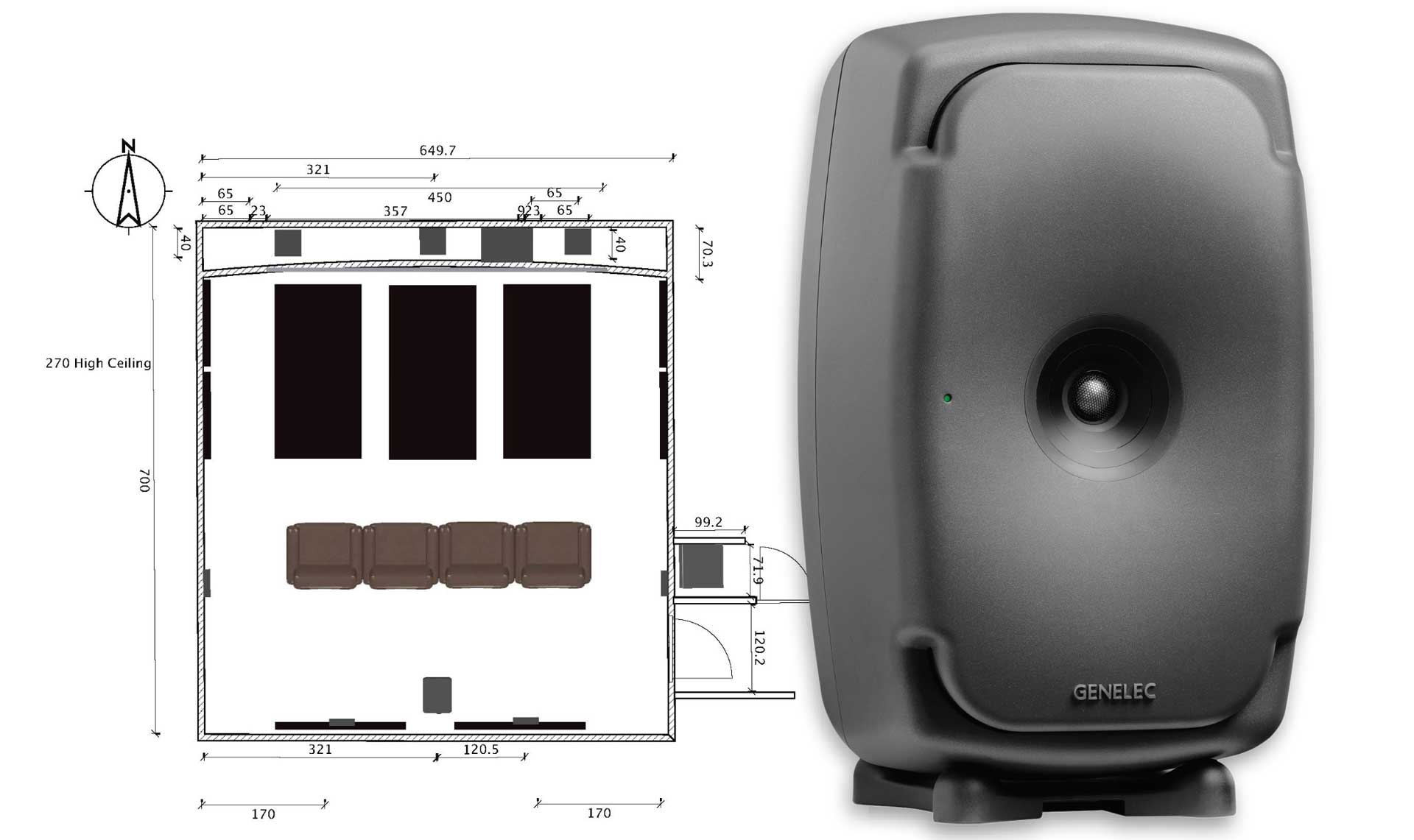
Making the plan
The space allocated for the new home cinema was off the home’s main hallway, behind the laundry, in a room 7 metres by 6.5, with a 2.7-metre-high ceiling.
“Almost as much time was spent in designing for this space as in installation,” Alan tells us, emphasising how he is firmly of the team mentality, knowing that working with experts in their field makes for a far more polished final result. So he ‘got the band back together’ by bringing in Steve Spurrier from Studio Connections to advise on the overall system, and Paul Kutcher from Visual Fidelity to ensure the best projector-to-screen solution for high impact visuals.
“The decision was made to go with a very wide 60-degree angle of view, with the screen some 4.5 metres in width,” says Alan, “a 175-inch diagonal.”
Get the What Hi-Fi? Newsletter
The latest hi-fi, home cinema and tech news, reviews, buying advice and deals, direct to your inbox.
This is indeed very wide; most home cinemas don’t go much above 40 degrees. This reminded us of a cinema that we covered in Sound+Image in 2019, when Kutcher and Spurrier had collaborated on a similarly widescreen presentation after Steven had been investigating a cinematography white paper that redefined a truly immersive experience as deliverable with a 63-degree field of view and a 2.4-to-1 aspect ratio. And as we can attest, the results in that room had been spectacular.
“Yes, we invited this home owner to come and see that theatre, and he was blown away,” Steven Spurrier told us. “Experiencing that sense of scale from both the image and the sound provided the goals for this new theatre.”
The visit to that earlier theatre also gave the team an opportunity to discuss with the client in detail the decisions that had governed the systems in that room, and how they related to the space available for the new project. This was a valuable discussion, says Alan.
“The time that Steve, Paul and myself spent with the client helped immensely with a smooth installation overall, allowing them to understand the advantages and disadvantages of different aspects to the project,” he says.
It also clearly gave the clients themselves a sense of investment in the goals of the project.
“With Alan, Steve and Paul, we had a team we trusted fully,” the owners tell us. “It was clear that they cared as much as we did about achieving our objectives for a high performance environment.”
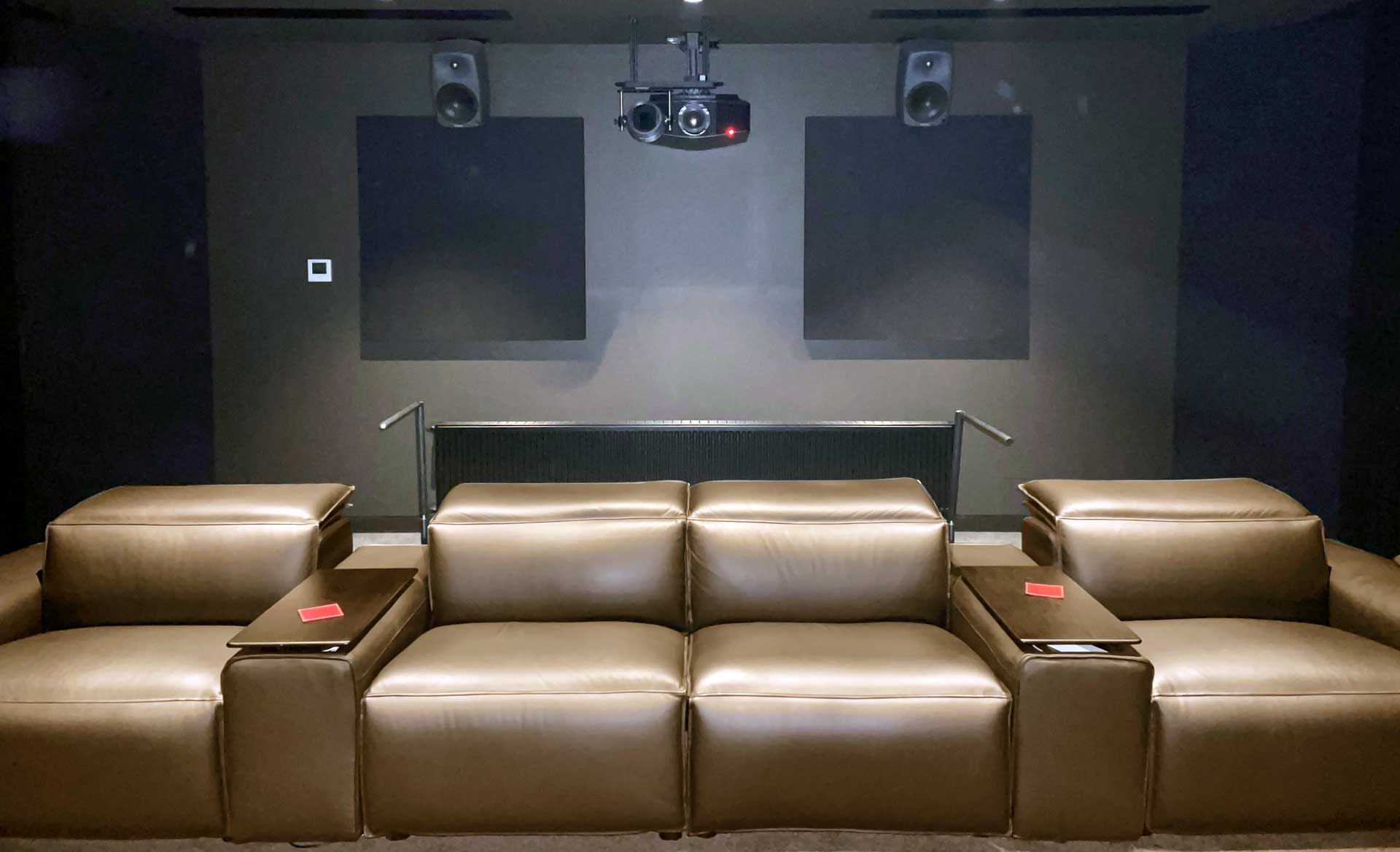
Wide-screen viewing
In the final plan the seating is arranged in a single row of four seats, allowing plenty of space behind the seats and a good area in front. There were discussions early on regarding extending the room to accommodate a second row (and a longer projection throw), but only on rare occasions would the cinema be hosting an audience greater than four, so it was decided that such visitors could be accommodated by having additional beanbag seating in front of the main seats.
The projector selected is Sony’s native-4K VPL-VW870ES, offering 2200 lumens from a Z-Phosphor laser light engine that promises a usefully-long 20,000 hours of operation – or a movie a night for the next 27 years.
“The projection system was designed as a whole to maximise the image size within the constraints of the room dimensions,” says Paul Kutcher from Visual Fidelity. “The screen selection is an integral part of that, not selected in isolation but based on factors including room size, viewing distances, the projector, even the room aesthetics.”
Here a native 2.35:1 aspect ratio screen was chosen to maximise the width of the image in the space, along with an anamorphic lens system in the optical path to deliver this large image without the need for that room extension to push the projector further back.
“The anamorphic lens also enables the full pixel resolution and full light output from the projector to be used when projecting Cinemascope format,” explains Paul. “It maximises on-screen image brightness.”
The Schneider 1.33× (the stretch factor) XL lens is mounted to a Schneider motorised linear sled and deployed only when required.
“This ensures the full resolution of the projector for both 2.35:1 and 16:9,” says Paul. “So unlike designs based around multiple lens memory positions or video scaling, this space maximises both image brightness and resolution at all times.”
The screen is Stewart Filmscreen’s Cine-V model with a THX Ultra2 microperforated surface. Dropdown vertical masking is used for 16:9 display, which achieves a 140-inch diagonal image. The screen surface itself is Stewart’s Ultramatte 150, with a peak gain of 1.5 “to maximise on-screen brightness and compensate for the 10.2% light loss through the perforated surface,” says Paul.
As the Cine-V screen is curved, Andersons AVI custom-designed a front wall to match the curvature, designing custom laser-cut top and bottom panels and undertaking the fiddly and extensive assembly, custom-fitting everything to provide a gapless installation.

Atmos or not?
The discussions for the sound system included an interesting debate over whether height speakers for Dolby Atmos would enhance the system, or actually compromise it. This merits consideration by anyone considering a home cinema, and in this example Studio Connections’ Steve Spurrier makes a good case for a non-Atmos solution.
“Every project has a budget,” he notes, “and no matter what the budget, decisions have to be made where to compromise, whether on aesthetics, or weight of sound, or screen size. My focus when discussing plans for a room are around performance and value for money, and for this room Dolby Atmos was a discussion we had early on in the process. My recommendation was to not have height channels in this scenario – for two main reasons.
“Firstly the ceiling height would compromise the performance of the height layer [although the room has been constructed to enable a height layer to be easily added later, if desired]. But secondly there was the impact on the budget. The dollars spent adding four channels of Atmos might not be huge, but it’s money that could be diverted to other areas in order to provide a better total experience – maybe allowing us to have the next model up in projector, or the anamorphic lens, or one of the other design choices we had to make.”
This echoes the point made earlier by Kutcher for the imaging system, and it’s worth reinforcing. No single aspect of a theatre design should be considered in isolation.
“The room needs to work as a system,” says Steven Spurrier. “Everything is important, and everything needs to work in harmony. And in this case I didn’t believe Atmos to be critical to the success of this room.”
Sound decisions
So the sound layout here is 7.1. And as in that earlier theatre that we saw back in 2019, there’s no rack full of power amps. Instead the audio system here uses a processor/preamp to feed a system of active speakers from Genelec – which is a speaker brand perhaps better known for their prowess in recording studios.
“Being all active speakers, there is no debating which cable or power amplifier suits the system,” says Steven Spurrier from Studio Connections. “Genelec designs the total package end to end, ensuring that the signal leaving the speaker is accurate.”
Here the front LCR positions behind the screen are filled by Genelec’s 8361A active speakers, at 60cm high the largest of the company’s coaxial point source monitors, each packing 1000W of internal power. Smaller Genelecs are in side and rear positions, ensuring a match of tonal and power characteristics from all positions, and all underpinned by the hearty 7380A subwoofer, a 65kg monster with 800W of power and a 15-inch driver. As we’ve found in the past, Steven is a ‘one sub’ guy.
“Setting up one subwoofer to seamlessly integrate with a system is challenging to begin with,” he has told us. “Setting up multiple subs is even harder. Throwing more subs at a room is not the most efficient way of providing a solution – though it is an efficient way of selling more subwoofers!”
The processor in the system is the 15-channel Datasat LS10, which supports everything up to Dolby Atmos and DTS:X.
“The Datasat is a product that I have used before, with really good results,” Alan Anderson tells us. “I choose and use products not only for their quality but also for the support from the distributor. I use a number of products from this distributor [Avation], and they are always available to help sort through any issues – though with the Datasat products I’ve never needed this service. So far they have been faultless!”
The Datasat processor includes an ability to employ Dirac room optimisation, but in this case the processor was ‘zeroed out’ in regards to bass management, levels, distance and LFE settings, as all sound calibration was done using Genelec’s GLM – though only once the room was acoustically treated.
“Your room is the most powerful signal processor of the system,” as Steven Spurrier puts it. “This is why so much time is spent in design, and why room acoustics and treatment is so crucial. I encourage all our dealers to engage with an acoustician, and I’ve worked myself with Andrew Steel of Ultrafonic for more than 17 years.”
Ultrafonic acoustic panels are used here at the first reflection points of side walls and ceiling, and at the rear at the room, while Steven highlights particularly the sometimes underestimated importance of treating the front wall behind the screen.
“It is essential,” he says. “If not treated, the front wall will be a great reflector of the rear channels, and of any audio reflecting from the rear surface of the projection screen. The front wall of this room incorporates bass trapping and 100% coverage of the front wall with acoustic panels, all in black to allow absorption of light from the projector passing through the micro-perforations.”
The construction of the room itself was also carefully designed to achieve sound insulation from the rest of the house and externally. This included the installation of its own independent air conditioning and heating systems.
“I used Gyprock Soundchek plasterboard with Green Glue” [a noise-proofing foam sealant], says Alan, “and extra in-wall acoustic blocks, all to help minimise sound transfer between the room and the house.”
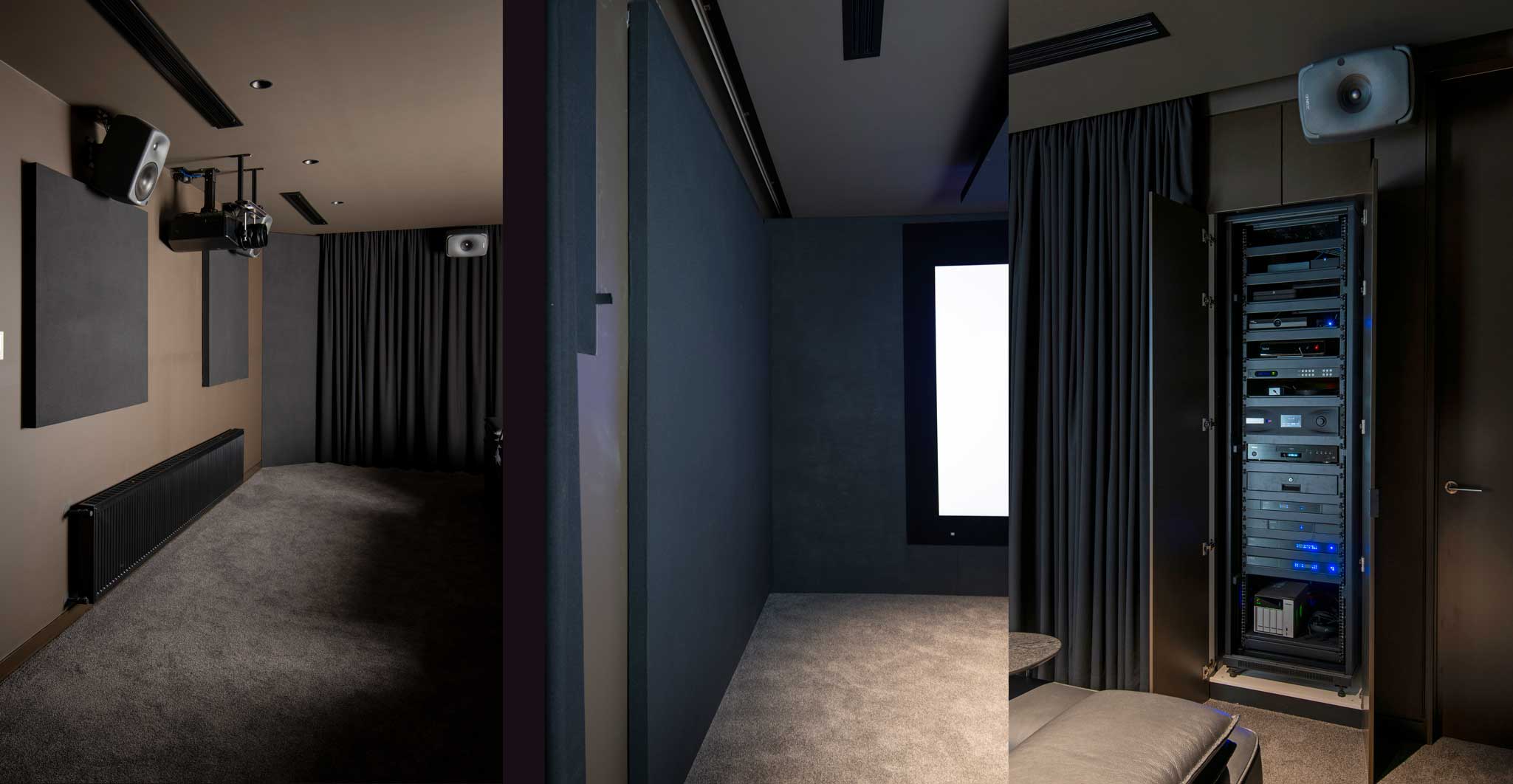
Smarts & control
Into the Datasat processor are plugged the system sources, which include Foxtel, Fetch TV for free-to-air, an AppleTV 4K media player, a Panasonic UHD Blu-ray player, and a handy Zappiti 4K media player and server.
The main equipment rack is on the right-hand wall of the theatre, but can be rear-accessed from the laundry outside for easy maintenance. It was designed to provide a central point for all the home’s technology needs, as Andersons AVI also installed the automation systems for the whole home, including various control systems, pro-grade Luxul data networking, alarms and surveillance, all controlled under a Savant automation system.
Both the Foxtel feed and the Zappiti media player are matrixed to be available across multiple video zones in the home. For local control in the theatre, as elsewhere, the family simply uses the Savant app on their own personal devices.

Result: thrilled
Not only was the sound fully calibrated but also the image, with ISF-certified Mick Peaker from Avical Australia ensuring the ultimate image performance.
“The differences between a calibrated and non-calibrated image are stark,” notes Paul Kutcher. “If the image isn’t professionally calibrated, you are simply not getting the best performance your system has to offer.”
And did the results match up to Alan Anderson’s promise of taking their home entertainment to a new level?
“We are thrilled with the performance of our new cinema room,” the owners tell us. “It’s our special place for movies and big sporting events with family and friends. And the single most important decision in a project like this was the selection of the design and installation professionals to partner with and make the dream come true”
Alan Anderson throws the love right back at them.
“It is a pleasure to know them,” he says of his clients. “They go beyond a working relationship as they truly care about everyone that they meet; I’ve seen this first-hand.”
We’ll leave the final word to the happy owners.
“What the team delivered and how they delivered it was brilliant from the start of the design process through to completion,” they tell us. “It is fantastic to have a special place in which to experience the wonders of cinema as the filmmakers intended. May there always be a place for high-quality custom installations in the world of home cinema!”
EQUIPMENT LIST & CREDITS
Panasonic DP-UB9000 UHD Blu-ray player
Apple TV 4K media player
Zappiti One 4K HDR media player
Fetch TV Mighty
Foxtel (via AVG Video Matrix)
Sony VPL-VW870ES 4K laser projector
Stewart Filmscreen 175-inch Cinemascope Cine-V with Ultramatte 150 THX Ultra2 microperforated screen
Schneider anamorphic lens & lens sled
Datasat LS10 AV processor
Genelec 8361A speakers x 3 (LCR)
Genelec 8351A x 2 (side)
Genelec 8350A x 2 (rear)
Genelec 7380A subwoofer
Savant control system
Ultrafonic and custom-made acoustic panels
CREDITS
Barton Building Group
Visual Fidelity
Studio Connections
Custom installation by Andersons AVI
Sound+Image is Australia's no.1 mag for audio & AV – sister magazine to Australian Hi-Fi and to the UK's What Hi-Fi?, and bestower of the annual Sound+Image Awards, which since 1989 have recognised the year's best hi-fi and home cinema products and installations. While Sound+Image lives here online as part of our group, our true nature is best revealed in the print magazines and digital issues, which curate unique collections of content each issue under the Editorship of Jez Ford, in a celebration of the joys that real hi-fi and high-quality AV can bring. Enjoy essential reviews of the most exciting new gear, features on Australia's best home cinemas, advice on how to find your sound, and our full Buying Guide based on all our current and past award-winners, all wrapped up with the latest news and editorial ponderings. Click here for more information about Sound+Image, including links to buy individual digital editions and details on how best to subscribe.
